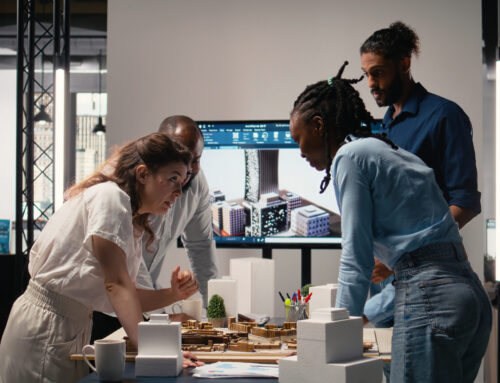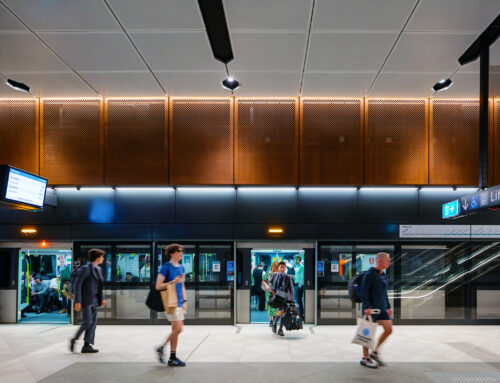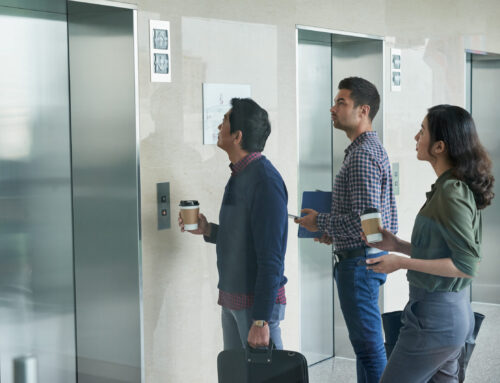Planning an office fitout after COVID
Like most businesses reopening their doors after months of lockdowns, our culture had taken a hit and teams were staggering their return to the office. We took this time as an opportunity to revamp our communal spaces – bringing in new furniture to meet the changing needs of our people.
We revisited our preferred furniture quotes from early 2020 (pre-pandemic) when we had initially planned a furniture upgrade. At this point we stopped, looked at the quotes with a fresh set of eyes and through a sustainability lens, and challenged whether there was a better a way to source what we needed. We decided to work with an office furniture reuse supplier, local to Auckland, and not only filled but exceeded our original furniture schedule.
Here’s what we considered when comparing out preferred quote for virgin furniture with the more sustainable, reused supplier we actually used.
Our ESG priorities
We measure these priorities against the UN Sustainable Development Goals, and report on our progress each year.
1. Reducing our environmental impact and continually improving business performance
Upfront carbon
One of the strongest environmental impact interventions is incorporating product reuse. This is because the majority of a product’s upfront carbon has already been invested.
The embodied carbon categories of A1 to A5 capture the product-related impacts associated with the materials, transport and manufacture of a product, as well as the carbon associated with the construction and delivery to site.
We know that opting for reused products has a significantly reduced footprint against these categories, and it’s fantastic to know our furniture only travelled a short distance rather than being freighted from overseas.
Diversion from landfill
Building on this circular economy model, we gave our old office furniture to the same supplier, diverting more furniture from landfill. We also managed to avoid all the plastic wrap, cardboard and packaging that would have come from procuring new office furniture.
The cost saving was significant
While financial savings weren’t our primary driver, this alternative procurement approach reduced the cost of our furniture by 52%, when compared to our original preferred quote from early 2020.
We also received a small payment for our existing furniture which will be allocated to NDY’s Charitable Trust. This enables us to make donations to some fantastic local charities.
2. Supporting the health, safety and wellbeing of our people
Indoor pollutants
Volatile Organic Compounds (VOCs) are hazardous chemicals present in indoor environments. They come from products like insulation, paints, furniture and flooring – typically products with a plastic composition.
VOCs emanate gas from a product over time (this is called ‘off gassing’), with the majority of the chemical vaporising in the initial period and then significantly less over time. In fact, the WELL Building Standard, a recognised third party sustainability certification scheme, considers furniture to be compliant after having had 6 months to ‘off gas’.
So the potential for these toxins to be released from a product into the environment reduces over time. This argues a compelling case for sourcing reused office furniture and is another great outcome from our decision to reuse.
3. Engaging and supporting our communities
We found a reused office supplier 14 km from our office. A family run business, its goal is to provide sustainable and affordable office furniture, and to foster a sustainable circular economy. Not only were we able to support their business, our decision also diverted our attention and money going to products manufactured offshore with unknown environmental and social sustainability performance.
4. Governance: Leading by example – conducting ethical and sustainable business practices
The work we do with clients includes strategic advisory services to help them reach their sustainability targets. These include reducing whole-of-life carbon, achieving net zero and creating tangible actions that align with their ESG strategy.
Living and breathing circular economy principles – identifying value in a product that’s already been used – is leading by example.
We have high ethical standards, as outlined in our Modern Slavery and Ethical statements. Sourcing from a local supplier where wages and conditions are good enables us to be true to these statements.
5. Delivering leading, innovative and sustainable projects for our clients
Our ESG priorities are pillars for us to operate by, as well as pillars to guide the work we do with clients. By living these out in full, we can be authentic in our engineering and sustainability consultancy.
We know, for example, that reusing furniture gives an organisation points in sustainability rating tools such as Green Star, WELL, The Living Building Challenge and LEED. Product reuse also offers a more financially sustainable solution, and we’re yet to work on a project that doesn’t include budget as a key decision-making factor.
We’ve shown that small interventions like sourcing reused furniture can amount to a significant impact. We were able to demonstrate a lower carbon investment, less waste being sent to landfill, a healthier workplace, local community engagement and leadership. Our bonus benefit was saving money.
Our message to businesses, government and individuals is that it doesn’t matter how small your action, if your action aligns with your Environmental, Social and Governance priorities. It’s this alignment that magnifies the benefits – for your business, people and the planet.

Read more from Shelly Thompson, our Sustainability Regional Lead, New Zealand, as she reflects on International Day of Women & Girls in Science
‘More and more we’re appreciating the role buildings have to play on occupant health, alongside things like the value of embodied carbon of products and the design decisions we make. When we’re looking at a new design, an existing asset or a business’s operations, too often we focus on operational efficiency in isolation. We need to take a holistic view, and aim to optimise the outcome for both the environment and the people residing in that space.’










